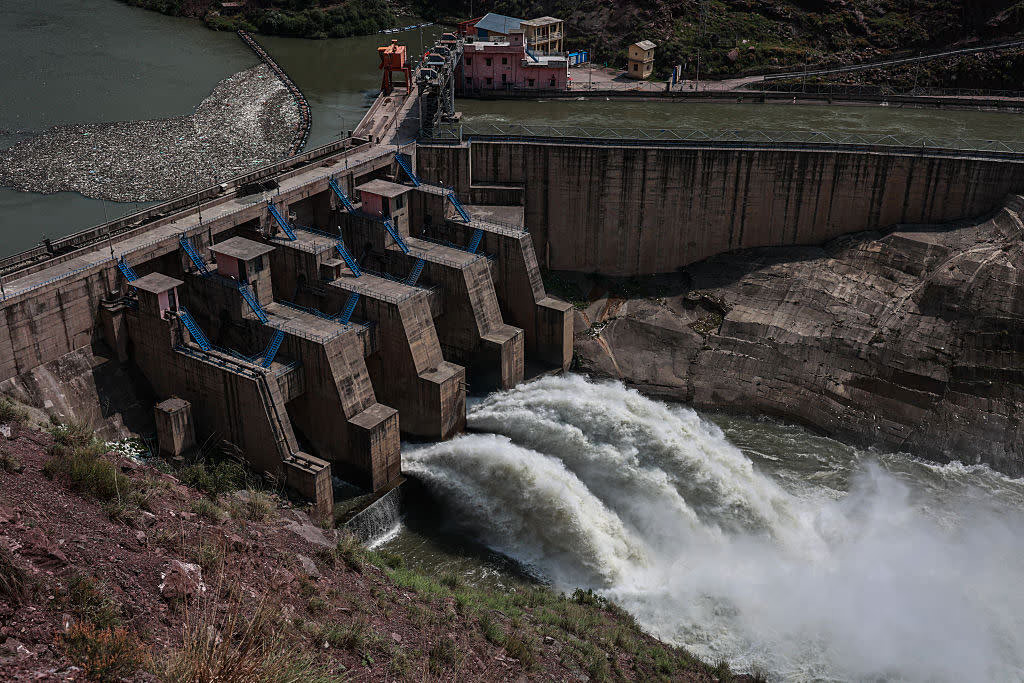Water politics in South Asia are once again at the heart of regional tension. At the end of October, Afghanistan announced plans to build dams on the Kabul River, provoking anger in Pakistan—just days after clashes along their shared border. That same month, thousands of people in Bangladesh took to the streets to protest what they see as India’s excessive influence over the distribution of the Teesta’s waters—a tributary of the Brahmaputra, known in Bangladesh as the Jamuna. India has yet to reinstate the Indus Waters Treaty, signed with Pakistan in 1960 but suspended in April following a terrorist attack in Kashmir. New Delhi is also alarmed by China’s latest project: a massive dam on the Brahmaputra, just thirty kilometers from the Indian border. With an estimated cost of $167 billion, it would be the largest dam in the world if completed as planned, with potentially profound consequences for the region’s ecosystem and for the countries downstream.
Taken together, these developments show that water policy in the region is becoming increasingly perilous. Rising demand for clean energy is driving South Asian states to expand investment in hydropower. At the same time, glacier melt and erratic weather patterns triggered by climate change are rendering river flows unstable, threatening the well-being of some two billion people. To avert new conflicts and manage these risks, countries in the region must build channels for dialogue and cooperation. The obstacles to doing so are formidable.
South Asia’s rivers have long been a source of friction. The three great systems—the Indus, the Ganges, and the Brahmaputra—all rise in the Himalayas. The Indus originates in China, runs through India’s Ladakh and disputed Kashmir, then crosses Pakistan before emptying into the Arabian Sea. The Brahmaputra likewise begins in China and flows through India and Bangladesh, while much of Nepal lies within the Ganges-Brahmaputra basin. In a region marked by mutual distrust, agreeing on water is no easy task. The India-Pakistan dispute over Kashmir has endured for decades. China and India remain at odds over their border. Bangladesh and Nepal fear overbearing influence from Delhi and Beijing. In such circumstances, the temptation to weaponise water against neighbours is obvious. According to California-based think tank the Pacific Institute, between 2019 and 2023 South Asia recorded 191 water-related conflicts—more than any other region in the world except the Middle East.
And by all indications, the situation is set to worsen. As Harri Godara, a professor at India’s O.P. Jindal University, notes, dam construction in the region is increasingly serving not only to generate electricity, but to project power, cement territorial claims, and pressure neighbours. China is using dams in Tibet to tighten its grip on a restive region. Backed by Beijing, Pakistan is building dams in the parts of Kashmir it controls, both to entrench its claims and to needle India. In response to China’s Brahmaputra project, India is planning its own giant dam downstream. Meanwhile, communities in Bangladesh complain that India opens the gates of existing dams without warning, unleashing destructive floods. Water disputes in South Asia are frequently entangled with other conflicts, amplifying the region’s broader volatility.

The Water Wars
What the Suspension of the Oldest Cross-Border Treaty Means for Peace Along Drying Rivers

Iran and Pakistan Accelerate Deportations of Afghans Who Have Lived in Their Countries for Decades
Since Early 2025, Over 1.2 Million Have Been Sent Back Despite the Taliban Threat
South Asia remains one of the world’s most water-stressed regions, with many areas facing shortages for much of the year. A study published this year by researchers at China’s Ludong University confirms that where water is scarce, conflict is more likely to erupt.
Surging demand for energy is only intensifying these pressures. Economic growth, rapid urbanisation, and the expansion of data centres are driving the need for reliable power. Against this backdrop, hydropower appears an attractive alternative: unlike solar and wind, it is not dependent on weather conditions. Pakistan already generates about one-fifth of its electricity from hydropower and plans to increase that share. India intends to boost its hydropower capacity from the current 42 gigawatts by more than 50% by 2032 and is considering the construction of roughly 200 new dams. Nepal already produces more electricity than it consumes, yet continues to expand its hydropower potential in the hope of exporting the surplus. It has long supplied power to India and recently began selling electricity to Bangladesh via India’s grid—an agreement that took years of negotiations.
To prevent future clashes, countries in the region must make far more active use of diplomatic mechanisms to coordinate new projects. According to Aaron Wolf, an expert on transboundary water agreements at Oregon State University, one of the most reliable early-warning signs of conflict is the construction of dams without prior consent. The ecological risks are no less acute: dams fragment river systems, devastate ecosystems, and force local communities from their homes. In the fragile mountain regions of the Himalayas, such impacts are especially severe—already sparking protests against India’s proposed mega-project.
The need for diplomacy is growing ever more urgent as South Asia’s ecosystems rapidly lose their resilience. Glaciers are melting at an accelerating pace, making river flows increasingly erratic, weakening the rock on which homes and dams are built, and heightening the risk of floods. Monsoon rains are becoming less predictable. Rather than freezing or tearing up water accords, regional governments should be reinforcing them and adapting their provisions to a changing climate.
There are signs that some governments recognise this. Despite suspending the Indus Waters Treaty in April, India continued to share flood forecasts with Pakistan. As Wolf notes, no war in the region over the past century has been caused by water alone. Yet water governance remains a patchwork of bilateral arrangements in which rivers are too often treated as bargaining chips rather than shared ecological assets. Closer cooperation remains the only viable way to preserve both the health of these rivers and the peace between the states that depend on them.
